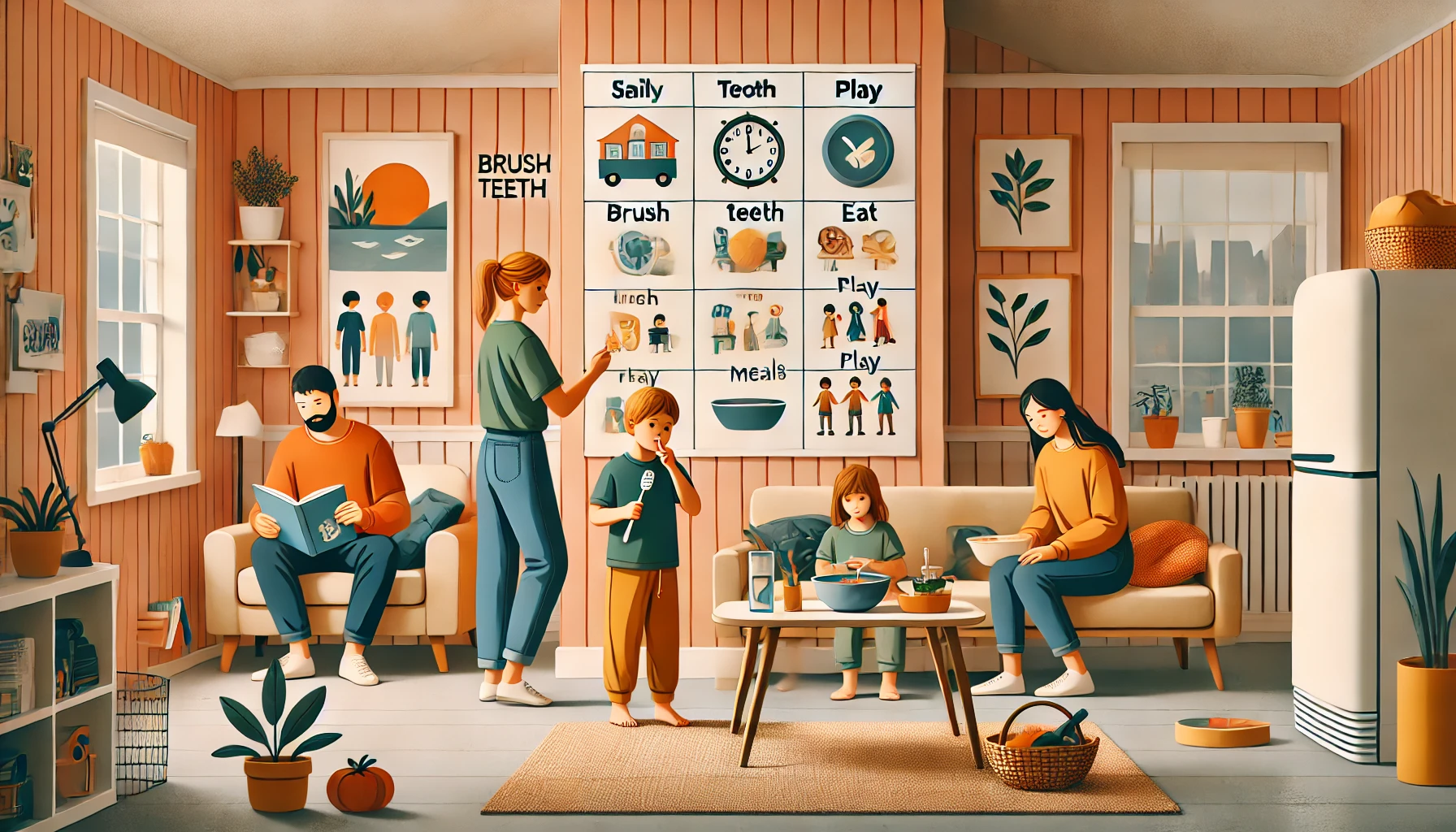Creating a healthy routine for neurodiverse individuals and their families is essential for maintaining balance, reducing stress, and promoting overall well-being. A structured daily routine offers stability and predictability, which can be incredibly beneficial for individuals with various conditions such as autism, ADHD, and other neurodevelopmental disorders. This article will provide practical strategies and tips for creating an effective and healthy routine that works for both the individual and the family.
Why Routines Are Important for Neurodiverse Individuals
For neurodiverse individuals, routines are more than just a way to structure the day—they offer a sense of security. When a person knows what to expect, they can approach each day with less anxiety and uncertainty. This is particularly important for people with conditions like autism, where a predictable environment helps in managing sensory overload and emotional distress. Having a daily routine helps in reducing the stress of the unknown and supports the individual’s emotional regulation.
For families, having a structured routine can also help in managing daily responsibilities and reduce chaos. It ensures that all family members know what to expect, providing a smoother flow of activities and lessens the chance of misunderstandings or last-minute confusion.
Step 1: Assess the Needs of the Neurodiverse Individual
Before creating a routine, it’s important to understand the specific needs of the neurodiverse individual. For example, individuals with autism may need a quieter environment, while those with ADHD might benefit from more frequent breaks or sensory-friendly activities. By considering these needs, you can tailor the routine to meet the individual’s requirements, making it more effective.
Take note of any triggers or stressors the person may encounter during the day. Do they get easily overwhelmed by crowded spaces or loud noises? Do they struggle with transitions between tasks? Understanding these factors will allow you to incorporate strategies that can minimize stress and increase comfort.
Step 2: Create a Consistent Schedule
Once you have a clear understanding of the individual’s needs, it’s time to create a consistent schedule. Consistency is key when building a routine. A predictable day helps to reduce anxiety and helps the individual feel safe and in control. The schedule should cover all important aspects of the day, including:
- Wake-up time: Start with a consistent wake-up time. A gradual routine with calming activities can make waking up less jarring and provide a positive start to the day.
- Meals: Establish regular meal times. This helps with overall well-being and ensures that the individual’s nutritional needs are being met. Meals should be balanced and cater to any dietary needs.
- Work/School/Activities: Whether the individual is in school, work, or engaging in therapy sessions, plan regular blocks of time for these activities.
- Breaks: Include regular breaks throughout the day. This is especially crucial for individuals with ADHD or sensory sensitivities, as it allows them to recharge.
- Bedtime: Establish a consistent bedtime routine. A calming pre-bedtime ritual can improve sleep quality and contribute to overall well-being.
Step 3: Incorporate Flexibility
While a structured routine is vital, it’s also important to allow some flexibility. Unexpected changes or disruptions may occur, and it’s essential to have a plan in place to adapt when needed. For instance, having a “Plan B” for days when a particular activity might not be feasible can reduce anxiety for everyone involved.
You can also introduce gradual changes to the routine over time, especially if there are transitions between different life stages, like starting school or entering a new phase of therapy. Allow the individual to adjust at their own pace, ensuring the change is not overwhelming.
Step 4: Make the Routine Visual and Easy to Follow
For neurodiverse individuals, especially those who are visual learners, having a visual representation of the routine can be incredibly helpful. Create a visual schedule using pictures or icons that represent different activities throughout the day. This can be especially beneficial for individuals with autism or other conditions that make reading or understanding abstract concepts challenging.
For instance, a visual schedule might include a picture of a toothbrush for morning hygiene, a plate of food for mealtime, or a computer for work or school activities. These visual cues make it easier for the individual to follow the schedule without needing constant verbal reminders.
Step 5: Prioritize Self-Care for the Family
Creating a healthy routine doesn’t only involve the neurodiverse individual—it’s essential to remember the well-being of the entire family. Families of neurodiverse individuals often face additional challenges, including emotional stress, caregiving responsibilities, and time management. Including self-care practices in the family’s routine is crucial to maintaining balance and well-being.
Encourage family members to take time for themselves, whether it’s engaging in personal hobbies, exercising, or practicing mindfulness. A healthy routine should also include downtime for everyone to recharge, preventing burnout and promoting overall family health.
Step 6: Regularly Review and Adjust the Routine
Life circumstances change, and so should the routine. Regularly reviewing the routine and making necessary adjustments ensures it remains relevant and effective. This might involve adding new activities, revising certain routines, or experimenting with new strategies to improve overall well-being.
Checking in with the neurodiverse individual about how they’re feeling about the routine can also provide valuable insights. They may offer feedback on what works and what doesn’t, which will help to refine and improve the structure over time.
Conclusion
Creating a healthy routine for neurodiverse individuals and their families is an essential step in promoting well-being, reducing stress, and fostering a sense of security. By considering the unique needs of the individual, incorporating visual cues, and including self-care practices for the whole family, you can create a structured yet flexible routine that supports the health and happiness of everyone involved. It’s important to remain adaptable and continue adjusting the routine as necessary to meet the changing needs of the individual and family.
